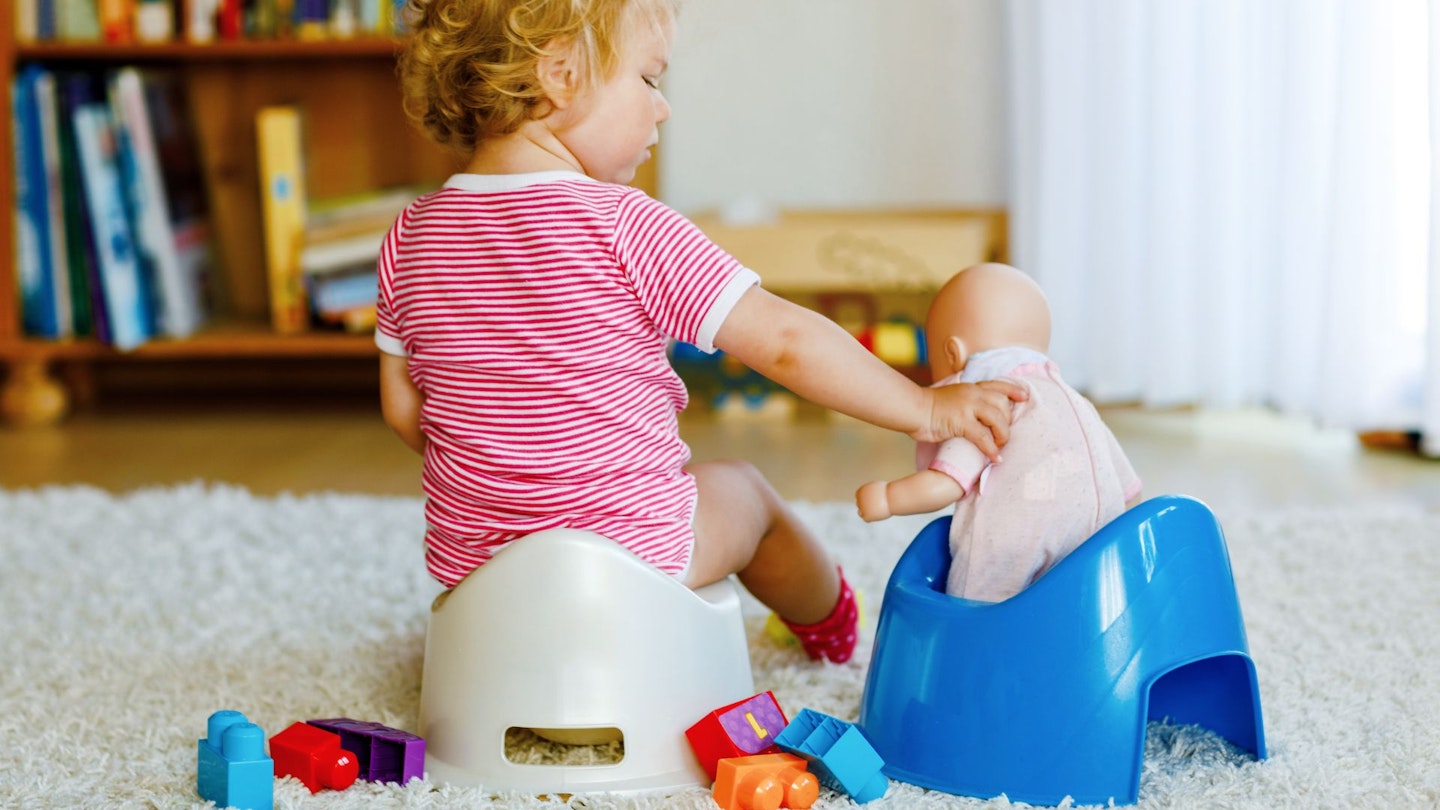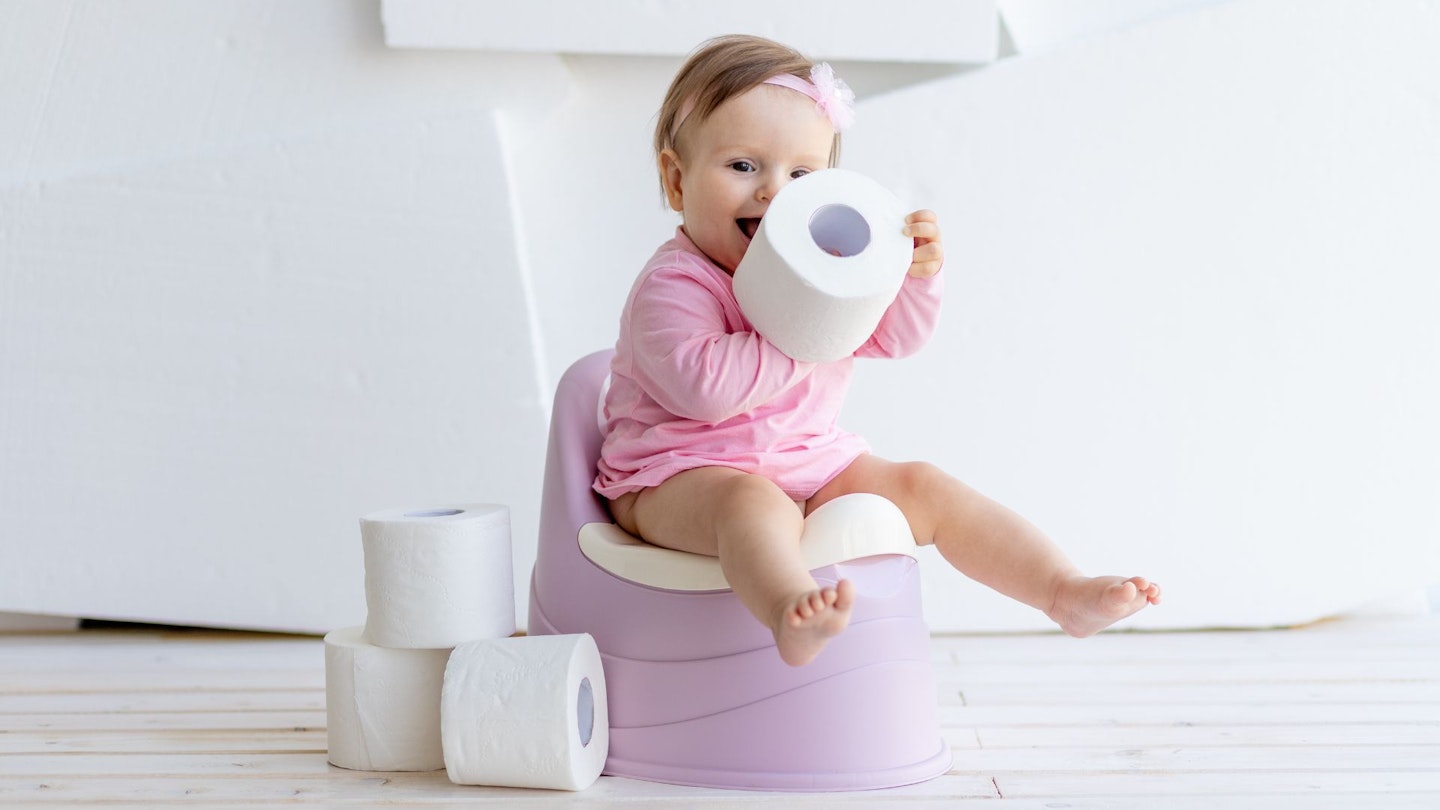There are many tips about how to potty train your toddler, but there isn't very much about elimination communication (EC), which involves using signals and cues to know when your baby needs to go to the toilet.
A newborn using a toilet-training potty might sound unheard of, but elimination communication, also known as infant potty training, is a well used method of toilet-training babies. The process of EC avoids the use of nappies and instead follows your baby's natural body cues for them needing to pee or poo.
Normally, nappies are at the top of your list to buy when you're expecting. If you're particularly more eco-conscious, you might even opt for reusable nappies.
When your baby arrives, after feeding they will probably need a bum change and you might notice your little one grunting or straining to signal that. You then repeat the process as they grow, until you reach the milestone of needing to potty train your toddler.
However, elimination communication cuts out the need for nappies or reusables and instead, you watch for the usual signals and get your baby to a potty instead. Over time, your baby will get used to this process and start communicating through cues and signals.
What does the process involve?
There are three main methods involved in EC, which are cues, signals and timings.
Cues
When your child is peeing, you can make a sound or hold your baby in a specific way to cue what they are doing. Through repetition of this, your baby will start to pick up on these cues and start associating them with using the potty. With sounds, they might even use these to signal when they need to go.
Signals
We can often recognise when our baby needs to do a poo or has done a wee. These can be shown through fussing, pausing from activities or straining. However they signal, you will be able to pick up on these over time and know it's time to take them to their designated toilet.
Timings
Through routines, babies can function like clockwork, in a way that works for them. You can make using a toilet or potty part of their routine. If you know they usually go 10 minutes after a feed, rather than waiting for their signal or cue, you can take them to do it. Keep a note of when they do, as it's helpful for seeing their patterns and habits.
What do you need before starting?
The main thing you will need to consider is lifestyle and whether or not EC can work around that. If you work full-time or plan on returning to work after nine months, it might not be as practical to do.
Standard nurseries might not have the time to follow your child's signals or cues while caring for other children. Similar to family or friends, it's a big commitment for them to continue.
There are a few items you will need to support you with your EC journey too. While elimination communication doesn't require you to use nappies, you might choose to use them for naptimes and bedtimes, or while out of the house.
Another thing you'd need to consider is potties. If you're planning to use these, think about how many you need and whether you want one in every room. For quick toilet stops, it would be recommended to use a Top Hat style potty
Clothing is something else to consider. As your baby won't be holding their pee or poo, you'll need clothing that are easy to remove.
The last thing that is incredibly useful is a notebook. You'll be able to keep a daily record of your baby's signals and timings. This makes it easier to get into a routine and being able to recognise when your baby will need the toilet.
What's the difference between elimination communication and potty training?

The main difference between the two is elimination communication involves signals and cues from your baby and using timings. When your baby shows the signals of needing the toilet, parents recognise this communication and hold them over a potty.
Potty training however will involve your toddler recognising that they need to use the toilet and will then hold their pee or poo until they're on a potty.
Elimination communication can also be referred to as natural infant hygiene, as it helps your baby to stay clean and dry. This means they will be a lot more comfortable and less likely to suffer from nappy rashes. The fact it doesn't require nappies too means that it's a lot more environmentally friendly.
When is the best time to start?
The best time to start elimination communication is from birth, up until your child is 18 months old. Potty training can start as young as 18 months if showing signs, so starting EC before this age is a good way of getting in tune with your little one's signals and cues.
What is the best potty position?
The classic hold would be to have your baby's back against your belly, with your hands under each thigh, bending your baby's knees. This is the most effect position to use, at allows your baby to fully empty their bladder and bowel.
What is the downside of elimination communication?
It takes a lot of time and commitment to get the benefits of elimination communication. Using nappies is considerably easier and if you're not with your baby every hour of every day to read your baby's cues or the childcare you have in place is not as committed, it doesn't really work.
Another downside is because it requires paying such close attention to your baby's body signals, it can be overwhelming for first-time parents and even more so for parents with another child.
Samantha Ball is a Product & Lifestyle Writer for Mother&Baby and freelanced for the website for two years before joining the team full time. She's a mum of two and loves browsing for the best products and cute outfits.
